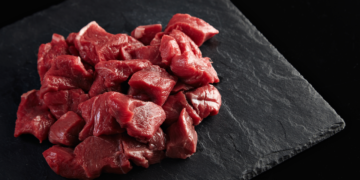These are listed in order of most toxic to least toxic and also covers how much is toxic.
INFORMATION ONLY
The content of this page is not veterinary advice. If you believe your pet has ingested anything toxic or poisonous, please call your veterinarian immediately.
The 6 To Look Out For
- extremely toxic
- absorbed quickly into the bloodstream causing a dangerously high release of insulin resulting in an acute drop in blood sugar
- even small amounts can cause dangerously low blood sugar, seizures, liver failure or death
- peak plasma levels of xylitol are reached within 30 minutes of ingestion in dogs
TREATMENT
- no antidote for xylitol poisoning
- vomiting should ideally be attempted only under veterinary supervision
- treatment may include intravenous glucose supplementation and liver protective drugs
TOXIC AMOUNT
- dogs that ingest doses of >0.1 grams per kg bodyweight of xylitol are at risk for developing hypoglycemia
- dogs that ingest >0.5 grams per kg bodyweight may develop acute liver failure
MORE READING:
https://www.msdvetmanual.com/toxicology/food-hazards/xylitol-toxicosis-in-dogs
- affected dogs experience gastrointestinal issues followed by acute kidney failure
- toxic agent in grapes is still unknown
- grape extract is not considered a threat; the grape or raisin itself has to be eaten for poisoning to occur
- ingestion can lead to vomiting, diarrhoea, abdominal pain, anorexia, and acute kidney failure
TREATMENT
- treatment may include inducing vomiting along with flushing saline solutions into the stomach, followed by suction of gastric contents
- activated charcoal may be administered to inactivate the remaining poison
- aggressive fluid therapy may be essential to increase the chances of survival
TOXIC AMOUNT
- lowest intake that has so far been reported to cause poisoning is around 2.8g of raisins per kg bodyweight and 19.6g of grapes per kg bodyweight
- one dog became ill after only eating 10 to 12 grapes
- a raisin can weigh anywhere from 0.5 to 1.5 grams
MORE READING:
- vegetables from this family toxic to dogs includes allium cepa (onion), allium porrum (leek), allium sativum (garlic), and allium schoenoprasum (chive)
- garlic is the most toxic
- dogs are very sensitive to onions and garlic whether raw, cooked, dehydrated or powdered
- several organo-sulfoxides have been implicated as toxic agents
- these toxins damage red blood cell membranes, making them fragile and cause them to burst which can lead to anaemia
TREATMENT
- no specific antidote exists
- treatment is supportive and is intended to reduce the oxidative effects and to prevent kidney damage caused by abnormal presence of haemoglobin in the urine
- inducing vomiting can be useful within the first hour after ingestion
TOXIC AMOUNT
- toxic dose for a 10 kg (22 lb) dog is approximately 50 grams
MORE READING:
- as a result of a surplus after world war 2, pigs, calves, dogs and horses were poisoned with by-products of cacao beans that were added to animal feeds
- theobromine is the major toxin and is particularly toxic to dogs, because its elimination is very slow ~ about 17.5 hours
- repeated intakes of smaller (non- toxic) quantities may still cause intoxication
- levels of theobromine are significantly higher in unsweetened baking chocolate and dark chocolate
TREATMENT
- no specific antidote is available for theobromine
- in order to minimise the absorption of theobromine vomiting can be induced immediately after ingestion
TOXIC AMOUNT
- four grams of cocoa powder per kg of bodyweight may be sufficient to kill a dog
- 10kg dog eating 20 grams of dark semi-sweet chocolate should be OK
- <15.01 mg/kg ~ should be ok
- between 15.01-34.02 mg/kg ~ may suffer from diarrhoea and vomiting
MORE READING:
https://www.omnicalculator.com/biology/dog-chocolate-toxicity
- ethanol, methanol, and isopropanol—are rapidly absorbed by the stomach, intestines, and colon and through the skin
- they negatively affect the central nervous system, damaging the organs throughout the body and impair their ability to function
- untreated, alcohol poisoning in dogs can cause organ failure and death
TREATMENT
- induce vomiting if ingested ~ or bathe thoroughly for skin exposure
- other therapies may include intravenous fluids, IV dextrose to correct low blood glucose, anti-nausea medication and warming support
TOXIC AMOUNT
- published oral lethal dose in dogs is 5.5 to 7.9 grams per kg bodyweight of 100% ethanol
MORE READING:
- within 12 hours of ingestion, dogs with macadamia nut poisoning frequently develop weakness, depression, vomiting, difficulty with walking and balance, tremors, and/or hyperthermia
- toxic agent is still unknown
TREATMENT
- no specific treatment is usually required
- vomiting may be induced for asymptomatic dogs with recent ingestion of more than 1–2 grams per kg bodyweight of macadamia nuts
- activated charcoal may be of benefit after large ingestions
TOXIC AMOUNTS
- dogs experimentally dosed with commercially prepared macadamia nuts at 20 grams per kg bodyweight developed clinical signs within 12 hours and were clinically normal without treatment within 48 hours
MORE READING:
https://www.msdvetmanual.com/toxicology/food-hazards/macadamia-nut-toxicosis-in-dogs
Others
- dogs ingesting caffeine have been known to experience seizures
- caffeine acts as a stimulant and can accelerate heartbeats to a dangerous level
- 140 mg per kg bodyweight can be toxic
MORE READING:
- leaves, seeds and bark of avocados contain significant levels of persin and can cause vomiting and diarrhoea in dog if consumed in large amounts
- has been observed that dogs are rarely affected by persin with the bigger risk being the accidental swallowing of the avocado seed
- birds and horses are especially sensitive to avocado toxicity
MORE READING:
If You Enjoyed Our Content
please consider buying us a coffee / sending us dog treats
Content Notice
Articles and videos are Informational only and not intended to replace professional veterinarian advice. Always consult a veterinarian or veterinary practitioner regarding your pet’s health and nutrition.



